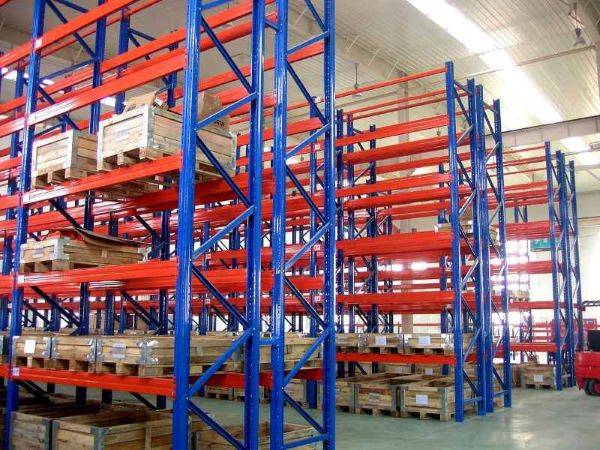2023-02-15
Pallet transport not only improves efficiency, but also solves problems with grocery handling processes, reduces cargo damage, etc. So what should I look out for?

Pallets have a direct relationship with stored shelves, handled products, containers, transport vehicles, unloading platforms and handling facilities, so the size of the pallet is the base for considering the size of other logistics equipment. For example, the most common dimensions for the width of the beams of pallet beam racks are 2300mm and 2700mm for the former to hold two 1200mm x 1000mm pallets and the latter to hold three 1200mm x 800mm pallets. Here, it is particularly worth mentioning that in order to establish an effective pallet common system, it is necessary to use a uniform specification of pallets, pallet standardisation is a prerequisite for consistent pallet operations. The following factors should be taken into account when selecting pallet sizes.
The right pallet size should match the size of the means of transport to make full use of the space available on the means of transport, improve loading rates and reduce transport costs, especially considering the dimensions of the inside of shipping containers and transport commercial vehicles.
Choose a suitable pallet according to the packaging specifications of the goods loaded on the pallet, make maximum use of the external surface area of the pallet and control the height of the centre of gravity of the goods carried. A reasonable indicator for the pallet to carry goods is to achieve 80% utilisation of the external surface area of the pallet and the height of the centre of gravity of the goods carried should not exceed two thirds of the width of the pallet.
International standard pallet specifications should be used wherever possible to facilitate the exchange and use of pallets.
Cargo pallets flow directly into the choice of pallet size. Usually the goods going to Europe should choose 1210 pallet (1200mm×1000m m or 1208 pallet (1200mm×800mm) to Japan, Korea's goods should choose 1111 pallet (1100mm×1100mm) to Oceania's goods should choose 1140mm×1140mm or 1067mm×1067mm pallet; to the United States The goods to the United States should choose 48 inch x 40 inch pallet, domestic common 1210 pallet sent to the United States. The 1200mm x 1000mm pallet is the most widely used in the world, and the most widely used in China.

The static load is the weight of the load that the pallet can bear when placed on a horizontal and rigid plane with the goods evenly laid flat on the pallet.
The dynamic load is the weight of the load that the pallet can withstand when using handling equipment such as a forklift truck, in dynamic operations where the goods on the pallet are laid flat and evenly placed.
Refers to the weight of the load that the pallet can bear when the goods on the pallet are laid flat and evenly placed on the cross-beam shelf or other similar material racking across the beam overhead.
Therefore, it is important to understand the function of the pallet when selecting the load capacity of the pallet, and when the pallet is to be stored on the shelf, the shelf load is most important. At the same time, the load capacity of the pallet is very much related to the way the goods are placed on the pallet. With a reduced load area, the actual residual load of the pallet will also be reduced, instead of the original rated load.
The concept of load is such that it is not always possible to distinguish between dynamic and racking loads. In the European Pallet Code, the load on the shelf and the dynamic load during forklift operation are combined into one load.
1.The goods label on the pallet should face outwards so that the barcode on each carton can be scanned without having to move.
2.When cargo pallets are used, the pallet fork should be in the area where the equipment turnover is handled to match the equipment.
3.When stacking goods, it is not recommended to go beyond the edge of the pallet and try to choose a pallet of a size and type more suitable for this commodity.
4.Do not use pallets that are damaged or of unknown origin.
5.When several different categories of goods are shipped on one pallet, pack the goods separately so that they are less likely to cause errors at the time of receipt. It is advisable to put up signs to indicate the different types of goods.
6.It is recommended that the heaviest goods are stacked at the bottom of the pallet.
7.Do not allow the carton to extend beyond the edge of the pallet.
8.Pallets must be punched close to the standard height to be able to allow for pallet voids and stacking opportunities.
9.Pallet the cartons with wrap-around film, ensuring that the wrap-around film completely covers the goods on the pallet. This will prevent moving goods from falling during transport, as well as ensuring that the stacked pallet is stable during transport.
We use third-party cookies in order to personalise your experience.
Read our cookie policy